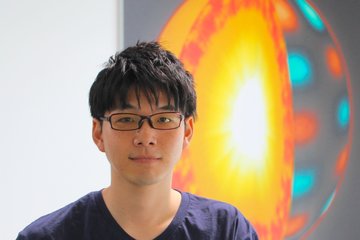Alle Typen
21.
Zeitschriftenartikel
First observation of CO at 345 GHz in the atmosphere of Saturn with the JCMT. New constraints on its origin. Icarus 203, S. 531 - 540 (2009)
22.
Vortrag
What is Saturn's H2O External Source? 12th Annual Meeting Asia Oceania Geosciences Society, Singapore (2015)
23.
Vortrag
First submillimeter observation of CO in the stratosphere of Uranus with Herschel-HIFI. European Planetary Science Congress, London, UK (2015)
24.
Vortrag
Is Enceladus Saturn's source of water? European Planetary Science Congress , Cascais, Portugal (2014)
25.
Vortrag
The Deep O/H Ratio in Uranus and Neptune from CO Spectroscopy and Thermochemical Modeling. Workshop on the Study of the Ice Giant Planets, Laurel, Maryland, USA (2014)
26.
Vortrag
2D-photochemical modeling of Saturn's stratosphere: hydrocarbon and water distributions. American Astronomical Society, DPS meeting #46, Tucson, AZ, USA (2014)
27.
Vortrag
Models for Temperature and Composition in Uranus from Spitzer, Herschel and Ground-Based Infrared through Millimeter Observations. American Astronomical Society, DPS meeting #46, Tucson, AZ, USA (2014)
28.
Poster
JUICE: A European Mission to Jupiter and its Icy Moons. DPS 48/EPSC 11, Pasadena, USA (2016)
29.
Poster
The Submillimetre Wave Instrument on JUICE. Ground and space observatories: a joint venture to planetary science, Santiago, Chile (2015)
30.
Poster
Results of the HssO Key Programme with the Herschel Space Observatory. Ground and space observatories: a joint venture to planetary science, Santiago, Chile (2015)
31.
Poster
Results of the HssO Key Programme with the Herschel Space Observatory. ALMA/Herschel Archival Workshop, Garching, Germany (2015)
32.
Poster
Some Results of the HssO Key Programme with the Herschel Space Observatory. ESA SRE Science Workshop, Aranjuez, Spain (2015)
33.
Poster
The origin of CO in the atmosphere of Uranus. 11th Annual Meeting, Asia Oceania Geosciences Society, Sapporo, Japan (2014)
34.
Poster
New Determination of the HCN Profile in the Stratosphere of Neptune from Millimeter-wave Spectroscopy. Asia Oceania Geosciences Society (AOGS) 11th Annual Meeting, Sapporo, Japan (2014)











